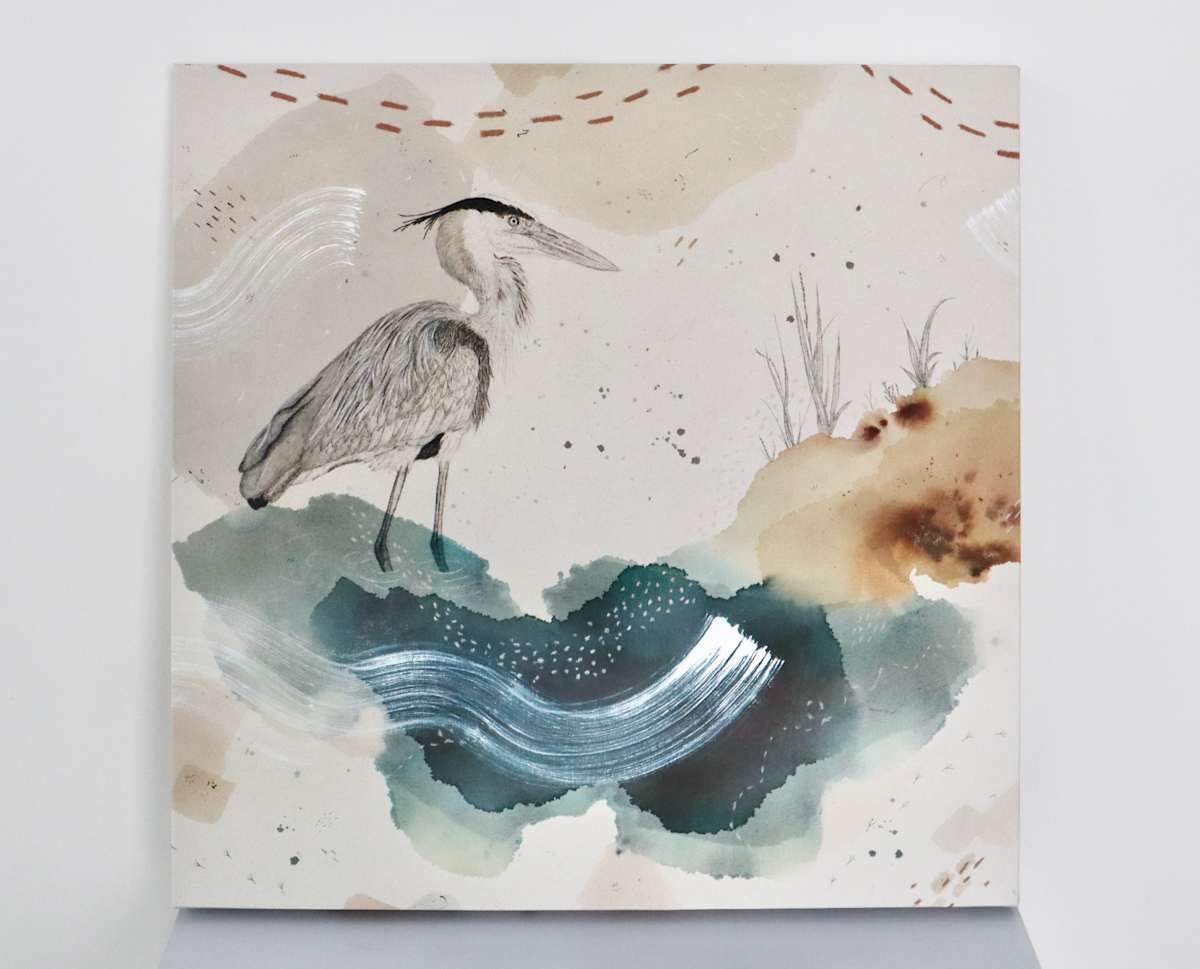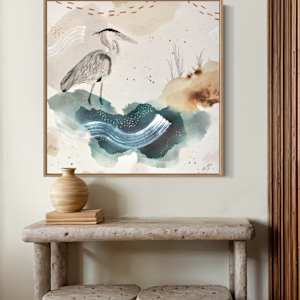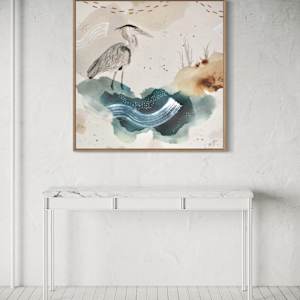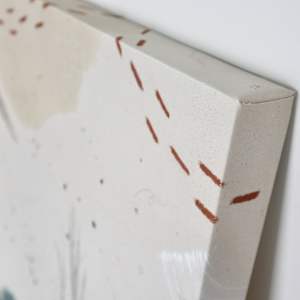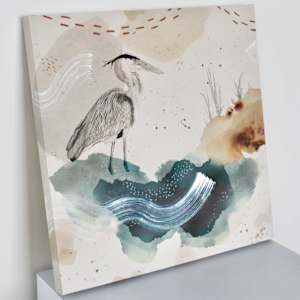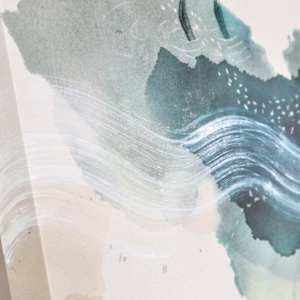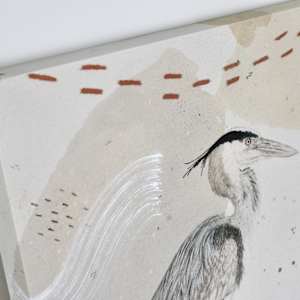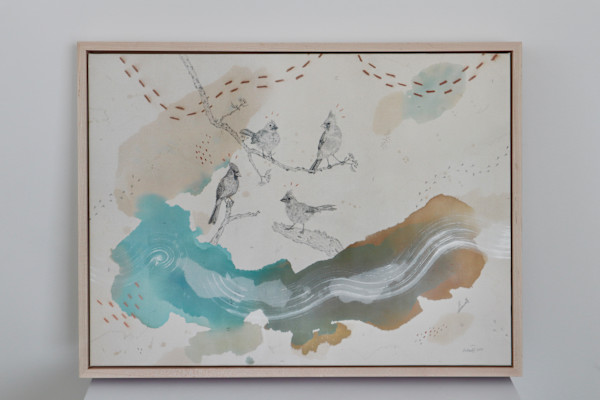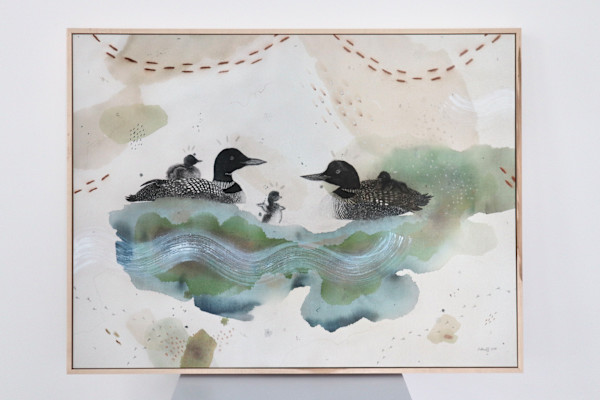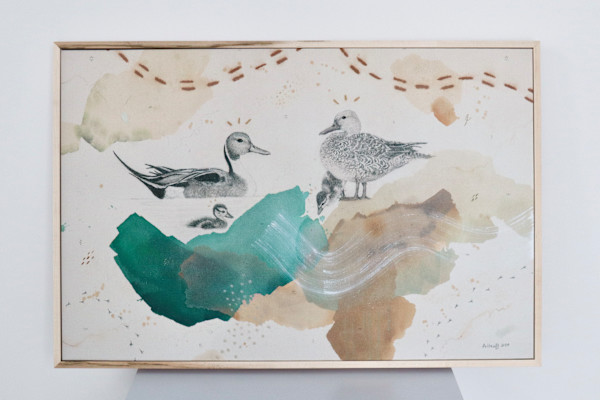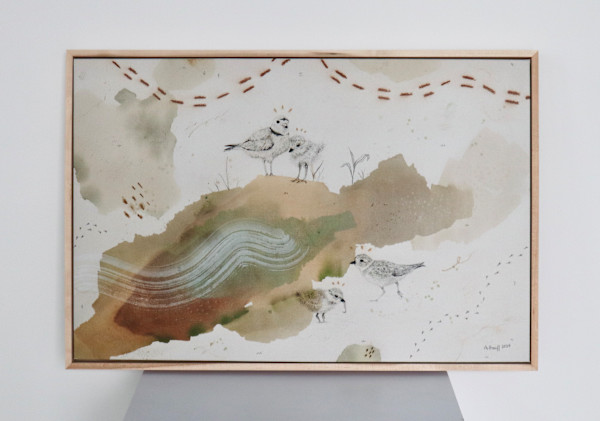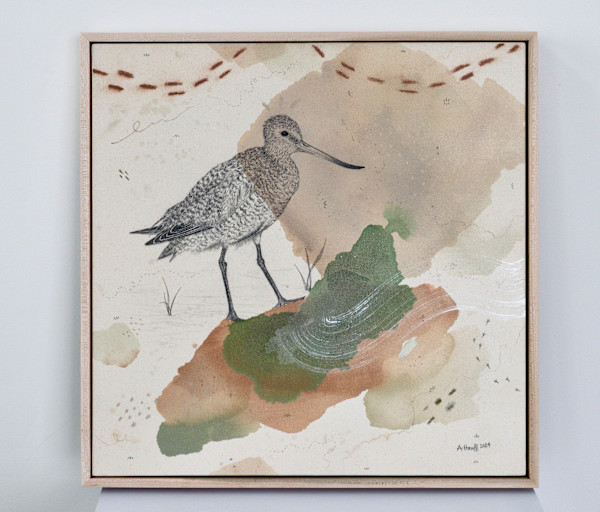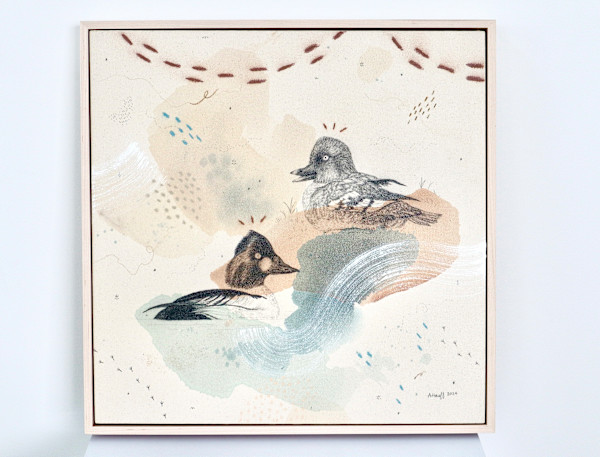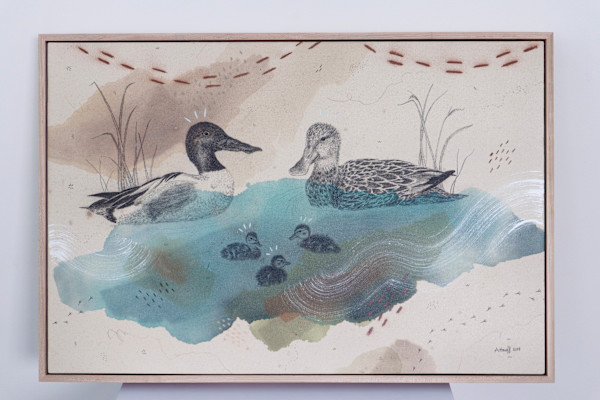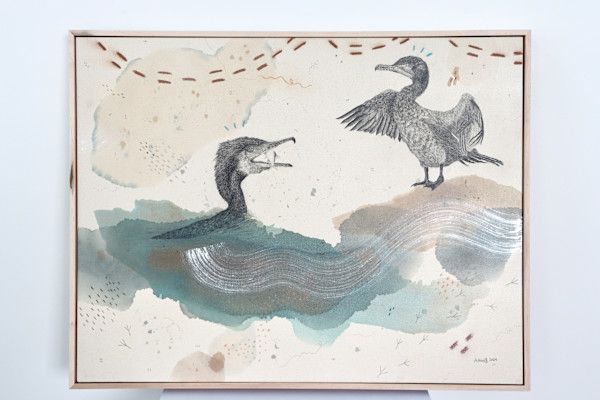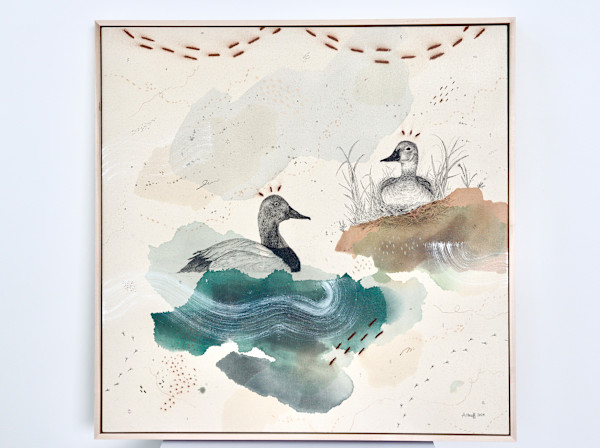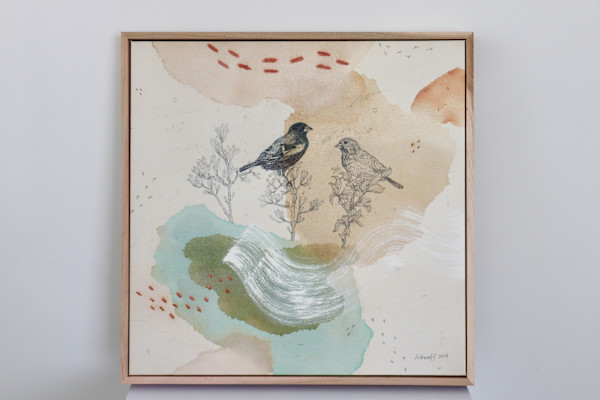This stately, commanding bird is the largest heron in North America, the subject of much art and mythology. It’s easy to see why they represent discernment, patience, balance, and striking at opportunity. Great Blue Herons are known for their slow stalk, often standing still waiting for prey, then striking in a flash.
Males and females are similar in appearance, with large bills, black crowns on whitish heads, and gray plumage. Their calls are squawkish, heard across marshes, lakeshores, and tideflats. Diet varies; they eat mostly fish, but also frogs, salamanders, turtles, snakes, insects, rodents, birds. They may also stalk small rodents in fields, or small water birds at marsh edges. Blue Herons have benefitted from the recovery of beaver populations, which create swamps and meadows. For how large these herons are, they only weigh 5-6 pounds due to the hollow bone structure all birds have.
Males choose nest sites and attract females by stretching their necks up with bills pointing skyward, flying in circles above the colony with necks extended, and then snapping their bills shut. Nests are gigantic, built in trees or shrubs. Females lay 3 to 5 eggs, and both parents incubate and care for the young. Heron chicks leave the nest after 65-90 days.
Blue heron populations are stable, and depend on wetland habitat. They remain vulnerable to habitat loss and human impacts such as traffic, logging, motorboats, and other intrusions that can disrupt nesting colonies. Other threats include chemical pollutants or other causes of reduced water quality.
This is a matte giclee print made-to-order with archival ink.
Available in multiple sizes rolled, stretched, or stretched and framed.
- Subject Matter: shorebirds/waterfowl
- Collections: Fine Art Canvas Prints

